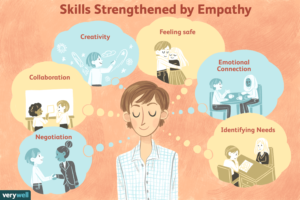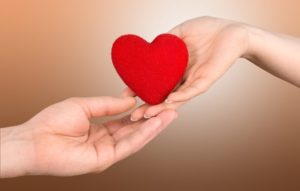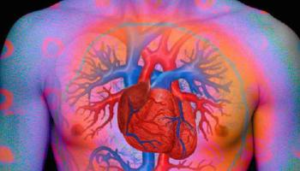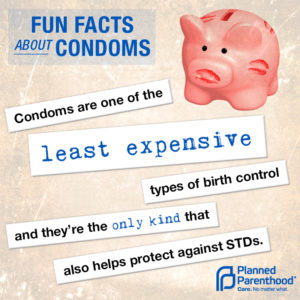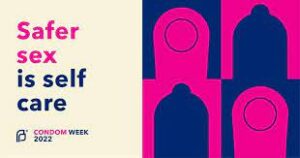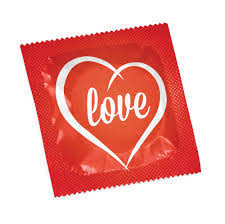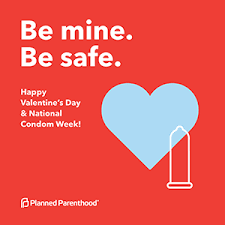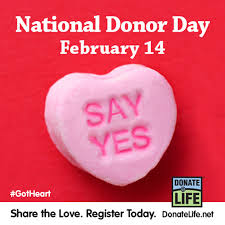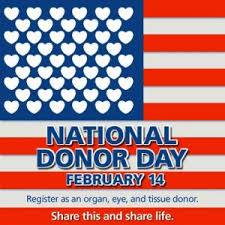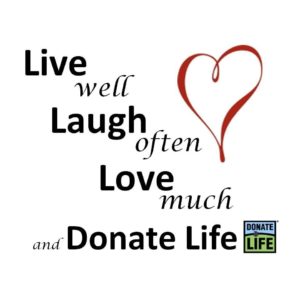“Although the terms “mind” and “brain” are sometimes used interchangeably, they are distinct entities. The brain is a physical organ that is responsible for coordinating our bodily functions, while the mind is a collection of mental processes that encompasses our thoughts, emotions, memories, and beliefs. The brain is the hardware that powers the mind, while the mind is the software that runs on the brain.
Kindness makes us happier and also protects against depression. That’s what the science says.
In a typical ‘kindness study’, people are asked to carry out a certain number of acts of kindness over the course of a day, a week, a month, or longer, and their happiness levels are either compared against people not doing the kindnesses or against their own happiness before they began the study.
In every version of these sorts of studies, the results are clear. Being kind makes us happy.
In longer studies, of the type that examine people’s volunteering habits, rates of depression are lower than in the general population. One of the reasons is that volunteering creates beneficial social connections. It could also be, as some have argued, that kind people are drawn to volunteering, which almost certainly contributes. But the evidence suggests that kindness itself protects against depression.
So why is this so? Why does kindness make us happier and protect our mental health? There are a few reasons.
One, is that deep in the human psyche is the sense that helping others is the right thing to do. For some, it’s spiritual. Kindness aligns us with a deep sense of spiritual purpose.
Secondly, helping others simply feels satisfying. For many, no explanation is necessary. It’s just the way it is. Kindness feels right and it feels good. The end!
In science, there’s also the fact that we have ‘kindness genes’. The main gene associated with kindness is actually one of the oldest in the human genome, at around 500 million years old. This means it has played a role in our survival over eons. As a result, we are drawn to help others and we get an intuitive sense that kindness matters.
Either way, there’s no question that kindness is good for mental health. In the brain, it produces oxytocin, the bonding hormone – aka, the love drug / hugging hormone / cuddle chemical / kindness hormone – when it involves a positive interaction between people. It also produces dopamine and serotonin. There’s even a suggestion that it might also produce endogenous opioids, the brain’s own morphine.
Another reason might be the fact that kindness can actually cause physical changes in brain matter. This is to do with both the focus on kindness and having kind thoughts, but also because of how kindness feels.
Evidence comes from kindness-based meditations, like the Buddhists’ Loving Kindness meditation, where we wish others happiness, good health, and freedom from suffering. A regular practice impacts brain regions associated with empathy and happiness.
In the long term, consistent activation of the same regions strengthens circuits there. What this means is that, just as working out muscles makes them stronger and makes it easier to lift heavy objects, so strengthening brain circuits makes it easier to access what those brain circuits do.
With consistent kindness, therefore, we come to genuinely care for others more and find it easier to access happiness. In other words, extracting happiness from the everyday backdrop of events and circumstances in our lives becomes more natural. Smiles become easier and more natural too.
This may be one of the main reasons why kindness is so protective against depression in the long term.
Another factor at play here is the fact that oxytocin – the main kindness hormone – turns down activity in the amygdala – a brain region involved in stress, depression, worry, fear, anxiety. In research where people were invited to lie inside MRI scanners and had their amygdala activated, when they were then give a dose of this kindness hormone, activation dropped considerably.
You might think of it like a dimmer switch being turned down just as you might turn down a thermostat when your home is too warm or turn down a light when the room is too bright. Only it’s kindness hormones that turn down the stress dimmer switch.
Other research backs this up. When volunteers were asked to report on their daily acts of kindness as well as their daily stress scores over a three week period, on days when kindness was high, stress was low. It wasn’t that when we’re being kind that stressful things don’t happen because experience tells us this is not the case. Instead, it’s that kindness buffers the effects of stress because of how it feels, and likely how it then affects brain circuits.
In other words, the same things can happen that might happen on any other day, but when we’re being kind, they don’t ‘sting’ quite the same.
In the long term, this stress buffering effect has enormous benefits for our mental health because we become less affected by seemingly negative circumstances that befall us.
So the moral of the story today is this: Be kind. It’s almost always the right thing to do, and it will probably make you feel better.”
How kindness impacts the brain and benefits mental health – David R Hamilton PHD

